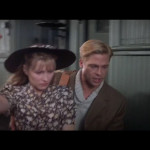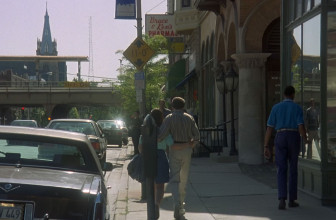Nestled amidst the towering peaks of the Himalayas, Tibet has long captivated the imagination of audiences worldwide. The isolated land, situated in one of the most remote and inhospitable regions on Earth, has served as the backdrop for countless tales of adventure and mystery.
One such story that has captured the hearts of audiences is that of Heinrich Harrer, whose incredible true-life journey should outshine even the most fantastical works of fiction. Seven Years in Tibet presents audiences with a cinematic interpretation of Heinrich Harrer’s real-life adventure, much like The Sound of Music adapted from Maria Von Trapp’s autobiography. I’m sure Heinrich Harrer’s critique of the film would be that the film was simply inaccurate to his experiences.
How to Download Seven Years in Tibet
You can download the film from a digital store. You can also stream it. Click on the Download button at the end of this review and make your choice. If you like Brad Pitt, check him out also in his more recent films – The Lost City, Bullet Train, and Babylon.
The Movie Review
Seven Years in Tibet tells the story of Heinrich Harrer, a renowned mountain climber and member of the Nazi party in 1939 Austria. Despite the objections of his pregnant wife, Ingrid, who fears for his safety and for her own loneliness, Heinrich sets off on a dangerous expedition to conquer Mt. Nanga Parbat in the Himalayas. Alongside his team, led by Peter Aufschnaiter, Heinrich pushes himself to the limit as they face treacherous avalanches and harsh conditions.
However, due to the outbreak of war, Heinrich and his team are captured by the British and imprisoned as enemy allies. Despite his initial reluctance, Heinrich forms a bond with his fellow prisoners and begins to question his own beliefs and values. As the years pass, Heinrich becomes increasingly disillusioned with the Nazi regime and ultimately renounces his membership. Through his journey, Heinrich transforms from a prideful and insensitive man to a more humble and empathetic individual.
The story of Seven Years in Tibet is a tale of self-discovery and redemption set against the backdrop of one of the most remote and majestic landscapes in the world. The hardships and struggles that Heinrich endures serve as a powerful reminder of the transformative power of adversity and the human capacity for change.
Unfortunately, it is not without its flaws. The film takes significant liberties with the source material, making changes to the characters, their motivations, and the overall narrative. These changes detract from the overall integrity of the story and can be quite disappointing for those who have read the book.
The Characters
For example, the film portrays Heinrich Harrer as a more sympathetic and likable character, whereas in the book, he is portrayed as more complex, with flaws such as being rude, impatient, and insensitive. Additionally, the film simplifies the political and historical context of the story and omits important events and characters from the book.
Furthermore, the film also makes a significant change in the portrayal of the relationship between Heinrich and the Dalai Lama. In the book, Harrer is portrayed as a mentor and friend to the Dalai Lama, while the film shows a more paternalistic relationship, which honestly feels quite culturally insensitive.
Now, while I do agree that the film’s writing wasn’t even respectful of the source material, the acting here is truly tremendous. Brad Pitt stars as Heinrich Harrer and delivers a nuanced and dynamic portrayal of the character.
His portrayal is noteworthy because he has to convey the complexity of Heinrich Harrer’s character – not always likable, but still empathetic. David Thewlis, who plays Peter Aufschnaiter, is the standout in the film though. Thewlis brings a sense of depth and humanity to the character, though the chemistry between him and Pitt is very bland and cold.
The young actor who portrayed the 14th Dalai Lama, Jamyang Jamtsho Wangchuk, was able to convey the complex feeling of a young boy who was going through a difficult time in his life.
The Visuals
Seven Years in Tibet features breathtaking production design and cinematography that transport audiences to the remote and majestic landscape of the Himalayas.
The film’s art department and location scouting team have done an excellent job in recreating the world of Tibet, from traditional Tibetan architecture to stunning mountain vistas. The use of natural light and wide-angle shots create a sense of awe and wonder that perfectly captures the grandeur and serenity of the setting.
The Music
But, one of the most important aspects of the film is the musical score by John Williams. Williams is known for his masterful compositions, and Seven Years in Tibet is no exception. The score is grandiose and evocative, and perfectly complements the film’s sweeping visuals. The music helps to convey the sense of adventure, wonder, and the emotional journey that Heinrich Harrer goes through. The use of traditional Tibetan instruments, combined with Williams’ orchestral arrangements, creates a unique and powerful sound that adds depth and emotion to the film.
Verdict
Seven Years in Tibet offers a visually stunning journey to the remote and majestic landscape of Tibet, with powerful performances from Brad Pitt and David Thewlis. However, significant changes to the source material and simplification of the political and historical context may disappoint fans of the book.
The evocative and grandiose score by John Williams adds depth and emotion to the film. Though not a perfect adaptation, it offers a captivating cinematic experience, meant for the big screen and nothing less.












